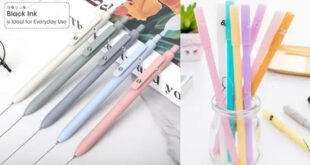Product packaging plays a crucial role in influencing consumer purchasing decisions. Among various packaging methods, product sleeves have become a creative and effective tool for attracting customer attention. Whether for food, cosmetics, or other products, well-designed product sleeves can elevate a product’s appeal, create a lasting impression, and ultimately drive sales. In this article, we will explore how to design product sleeves that capture customer attention, highlighting essential design elements and strategies to create impactful packaging.
Understanding the Purpose of Product Sleeves
Product sleeves serve as a versatile packaging solution that wraps around a product, offering both protection and branding opportunities. The primary goal of a product sleeve is to communicate the brand’s message while enhancing the product’s appearance. It’s essential to design a sleeve that aligns with the product’s purpose and the target audience.
For instance, custom food packaging sleeves should not only protect the food item but also communicate the freshness and quality of the product. The design should be visually appealing and practical, ensuring that the sleeve is easy to open and reseal if needed. Additionally, product sleeves can be used for branding purposes, offering space for logos, product descriptions, and promotional information. When a sleeve is designed thoughtfully, it becomes more than just packaging; it becomes a part of the overall customer experience.
Choosing the Right Materials for Product Sleeves
The choice of materials for your product sleeves is vital in making a lasting impression. Consumers often associate the quality of the packaging with the quality of the product inside. Therefore, selecting the right materials can significantly impact customer perception.
Common materials for product sleeves include paper, cardboard, and plastic. Each material has its own benefits. For example:
- Paper sleeves are eco-friendly and can appeal to environmentally conscious consumers.
- Cardboard sleeves offer sturdiness and can give a premium feel to the product.
- Plastic sleeves provide durability and are often used for products requiring extra protection, such as liquids or fragile items.
The material should complement the product and convey the right message to your audience. It’s also important to consider the texture of the material. A smooth or textured finish can make the sleeve more attractive to touch, enhancing the tactile experience for consumers.
Crafting Eye-Catching Visual Designs
Visual design is one of the most critical elements of a product sleeve. A well-designed sleeve can stand out on crowded shelves and draw the attention of potential buyers. The colors, fonts, and images used on the sleeve should be carefully chosen to reflect the brand’s identity and resonate with the target audience.
- Color choice: Colors play a significant role in consumer psychology. Bright and bold colors can attract attention, while muted tones can evoke feelings of sophistication and luxury. Make sure the colors used align with your brand and the product you are selling.
- Fonts and typography: The fonts on the sleeve should be clear, legible, and appropriate for the product. Fancy or overly complicated fonts can make it difficult for customers to read product information, leading to frustration.
- Images and graphics: High-quality images or illustrations can make the sleeve more visually appealing. Ensure that any images used are relevant to the product and do not overwhelm the design. A minimalist approach often works best, allowing the product’s key features to shine.
Combining these visual elements effectively can result in a striking product sleeve that grabs attention and entices customers to explore more about the product.
Integrating Brand Identity into the Design
Brand identity is a powerful tool for customer recognition and loyalty. The design of a product sleeve should incorporate key elements of your brand’s identity to create consistency across all product lines. This includes the use of logos, brand colors, and slogans.
A well-branded sleeve helps customers quickly recognize your product among competitors, reinforcing brand loyalty. Consistency in branding also builds trust, as consumers are more likely to purchase from brands they are familiar with. When designing a sleeve, think about how it fits into your overall brand strategy and how it will be perceived in various retail environments.
Ensuring Functionality Alongside Aesthetics
While aesthetics are essential, the functionality of the product sleeve should not be overlooked. A sleeve that looks great but is difficult to use can lead to customer frustration, affecting their overall experience with the product. Therefore, the design should strike a balance between being visually appealing and user-friendly.
Consider factors like:
- Easy-to-remove designs: Sleeves should be easy to slide on and off without damaging the product.
- Resealable options: For products that may need to be resealed, such as food items, consider incorporating a design that allows for resealing, ensuring freshness.
- Durability: The sleeve should protect the product from damage during transport and handling.
By focusing on both form and function, you can create product sleeves that not only attract customers but also enhance their experience with the product.
Incorporating Sustainable Design Practices
Sustainability is a growing concern among consumers, and eco-friendly packaging can be a key factor in purchasing decisions. Designing product sleeves with sustainability in mind can help capture the attention of environmentally conscious customers while also aligning with modern packaging trends.
- Recyclable materials: Using materials that can be easily recycled is a simple yet effective way to make your product sleeves more sustainable. Paper and cardboard are common choices for eco-friendly packaging.
- Minimalist designs: Reducing excess packaging not only cuts costs but also reduces environmental impact. A minimalist design approach focuses on using only the necessary materials and creating packaging that serves its purpose without waste.
- Eco-friendly inks: Choosing vegetable-based or water-based inks for printing can reduce the environmental impact of your packaging.
By adopting sustainable design practices, you can position your brand as socially responsible and attract customers who prioritize environmental impact in their purchasing decisions.
Customizing Sleeves for a Personal Touch
Personalization is an excellent way to connect with customers and make your product stand out. Customizing product sleeves for specific events, promotions, or even individual customers can add a unique and memorable touch to your packaging.
- Event-specific designs: Create limited-edition sleeves for holidays, special promotions, or collaborations. These designs can generate excitement and encourage customers to make a purchase.
- Customer names or messages: Personalizing sleeves with the customer’s name or a personalized message adds a layer of exclusivity to the product. It makes the customer feel valued and increases the likelihood of repeat purchases.
- Customization for different markets: If your product is sold in various regions, consider customizing the design to appeal to different cultural preferences and tastes.
Adding a personal touch to product sleeves can enhance customer satisfaction and create a lasting impression.
Conclusion
Designing product sleeves that capture customer attention requires a strategic blend of visual appeal, functionality, and innovation. From choosing the right materials to incorporating brand identity and personalization, each design element plays a role in influencing consumer behavior. Custom food packaging sleeves, in particular, offer endless opportunities for creativity, helping brands stand out in a competitive market. By focusing on sustainable practices, optimizing for retail display, and leveraging modern packaging technologies, brands can create memorable packaging that resonates with customers and drives sales.
 Our Gateway to Insightful Blogging Exploring Ideas, Sharing Knowledge, Inspiring Minds
Our Gateway to Insightful Blogging Exploring Ideas, Sharing Knowledge, Inspiring Minds



